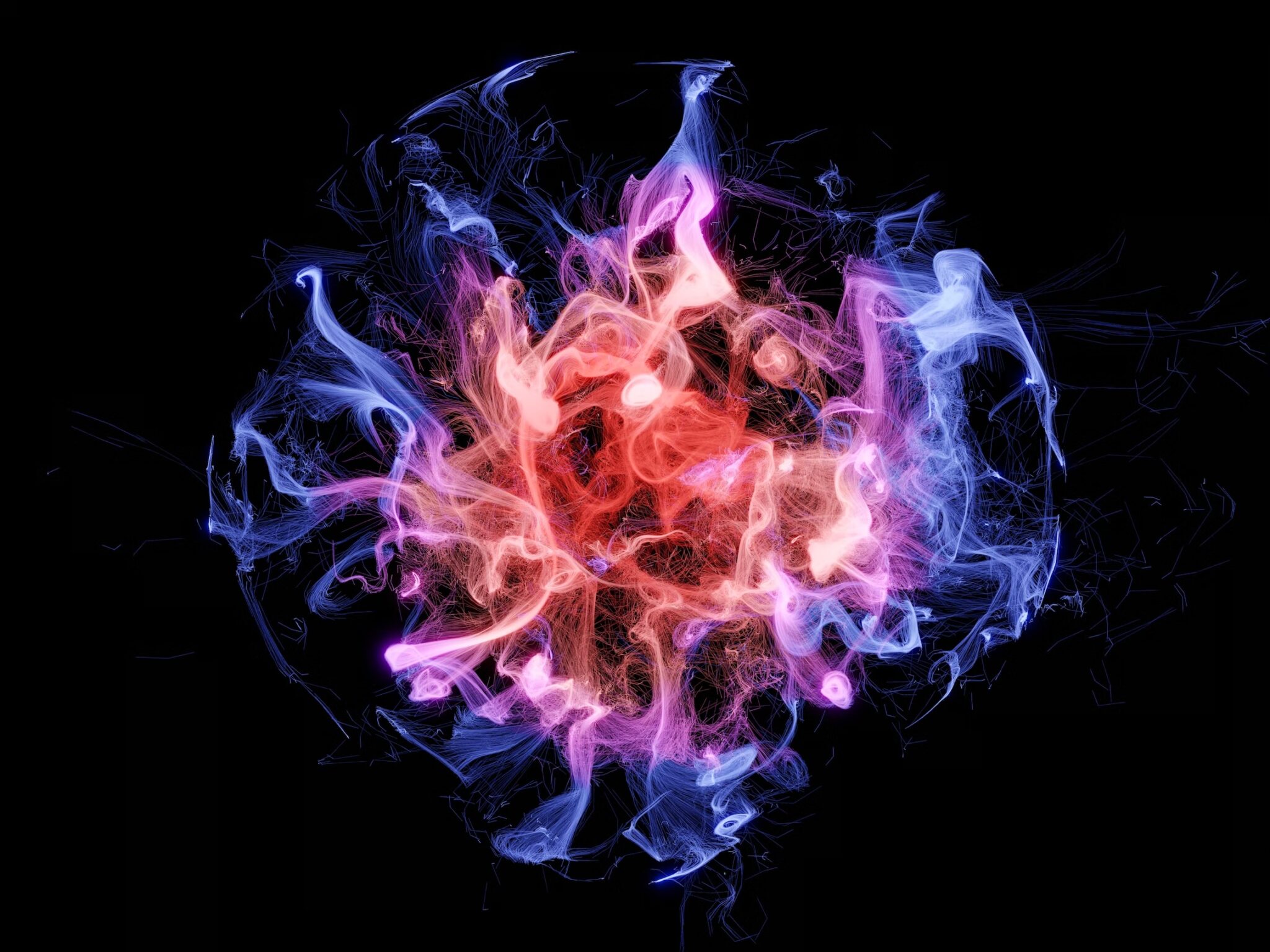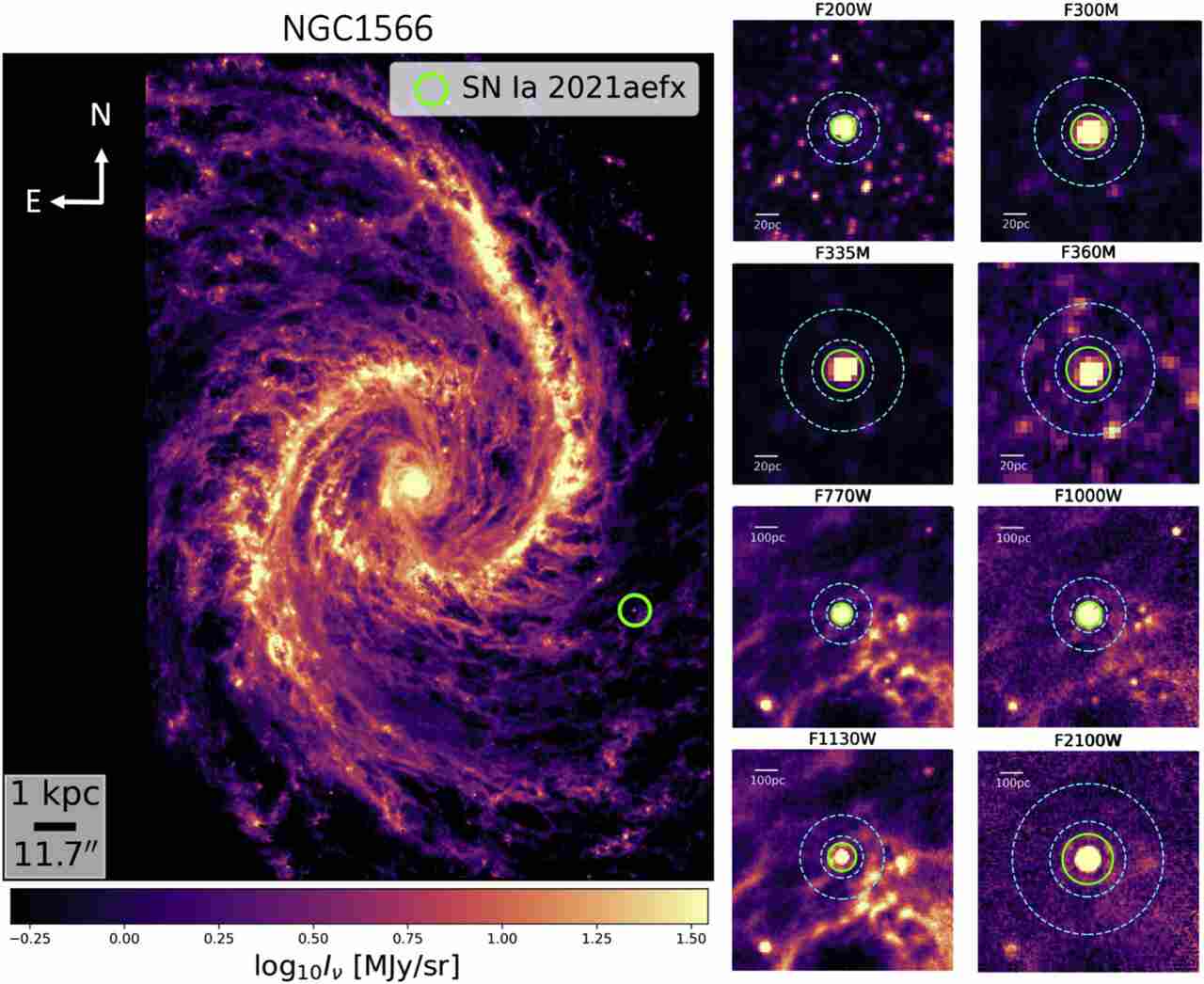Using data obtained during the first year of interstellar observations of the James Webb Space Telescope, an international team of researchers accidentally noticed a supernova explosion in a spiral galaxy.

A study recently published in The Astrophysical Journal Letters provides infrared measurements of one of the brightest galaxies in our cosmic neighborhood, NGC 1566, also known as the “Spanish Dancer”. It is located about 64 million km from Earth. The extremely active center of the galaxy has led to the fact that it has become especially popular among scientists seeking to learn more about how star-forming nebulae evolve. As a result of the explosion in the galaxy NGC 1566, scientists were able to investigate a Type 1a supernova – an explosion of a carbon-oxygen white dwarf star.
“White dwarf explosions are important for the field of cosmology because astronomers often use them as distance indicators. Type 1a supernova explosions also produce a huge part of the elements of the metal group in the Universe, such as iron, cobalt and nickel,” explained Michael Tucker, a researcher at the Center for Cosmology and Astrophysics of Elementary Particles at Ohio State University.

Using data from JWST’s near- and mid-infrared cameras, the researchers found that the supernova’s afterglow was visible more than 200 days after the explosion.
Solving the mystery of supernovae
For many years, it has been unclear whether fast-moving particles leak into the environment when cobalt-56 decays into iron-56, or whether they are restrained by the magnetic field created by supernovae. However, after investigating the cooling properties of the supernova, scientists noticed that in most cases the ejection did not go beyond the explosion. This once again confirms many assumptions made by scientists in the past about how these complex substances work.
Future observations by James Webb will continue to help scientists develop their theories about the formation and evolution of stars. Further access to other types of image filters can also help test them, creating more opportunities to understand wonders far beyond our own galaxy.
Earlier we reported on how Google lost USD 100 billion due to the question about James Webb.
Follow us on Twitter to get the most interesting space news in time
https://twitter.com/ust_magazine
